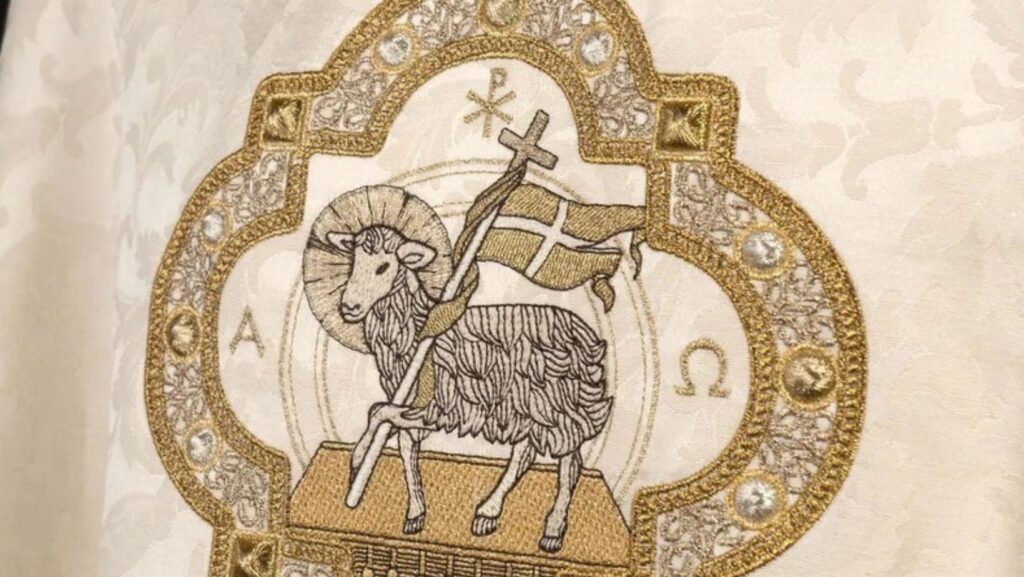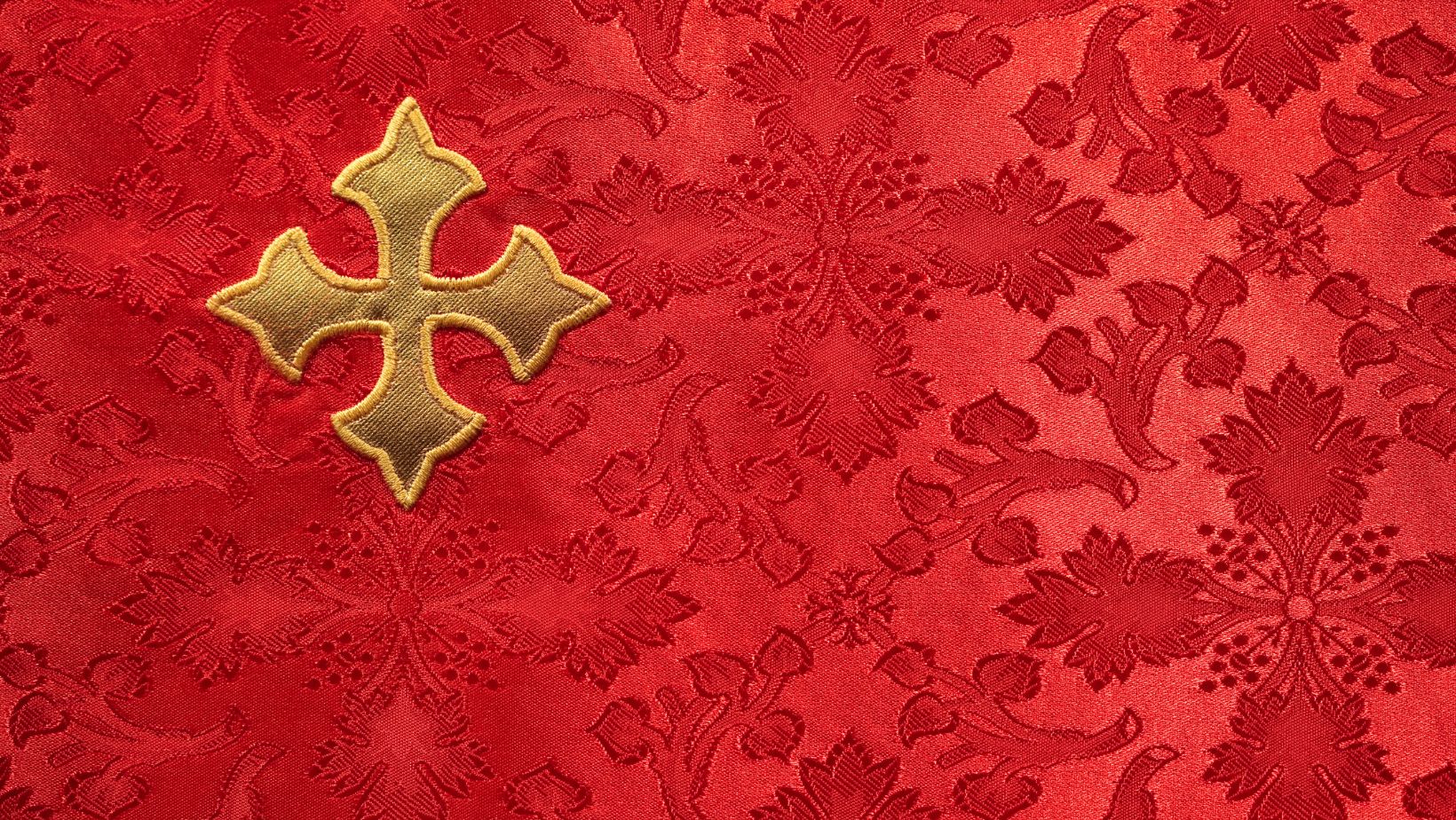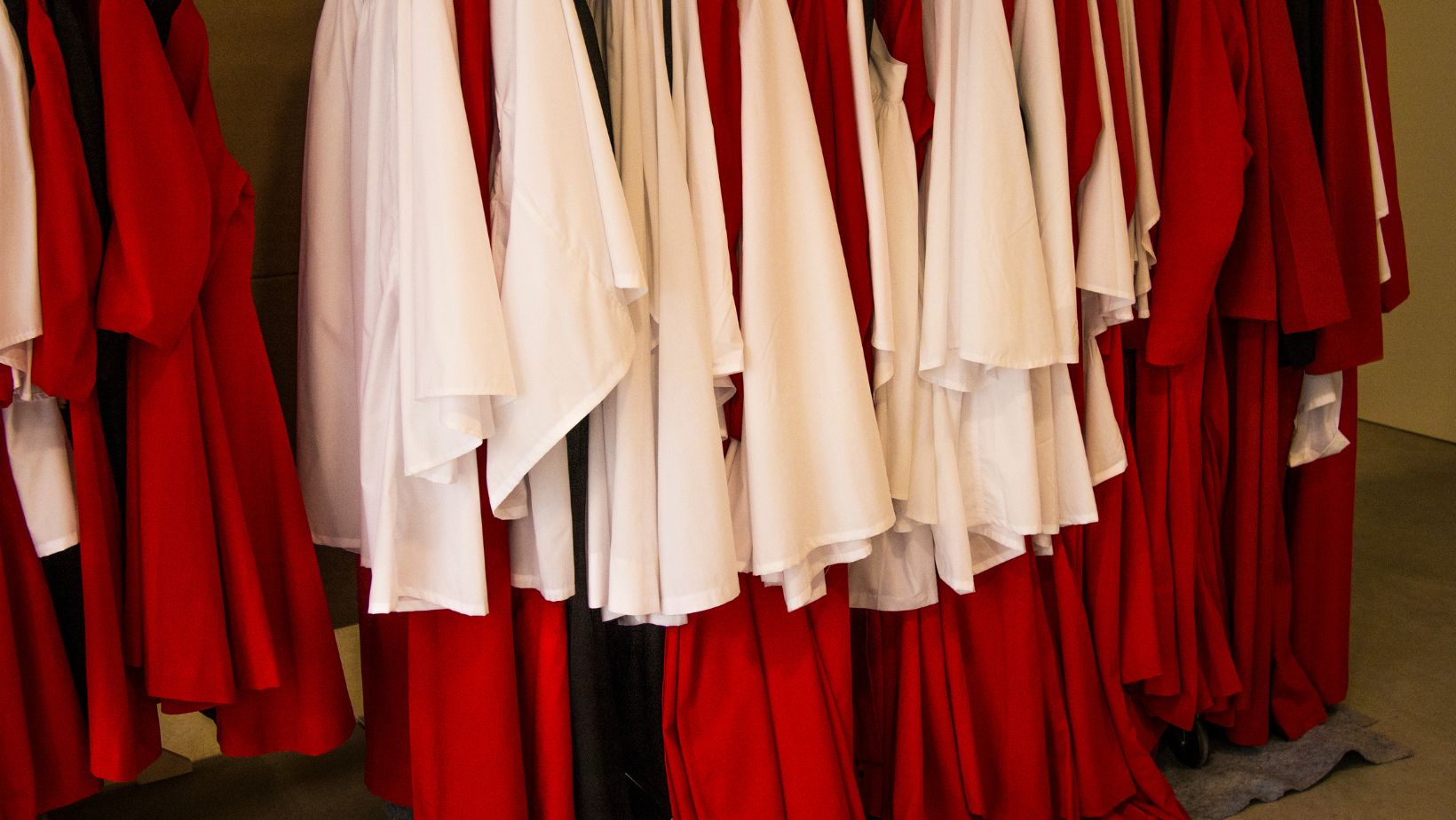
“Altar cloths, often underestimated textile elements, play a crucial role in Christian liturgy. They are not mere decorations but profound symbols of respect, purity, and sacredness, contributing to creating an atmosphere of prayer and reverence during celebrations. In this article, we will explore the intrinsic meaning of altar cloths, their history, symbolism, and different types, highlighting how these textile elements elevate the liturgical experience and honor the Eucharistic sacrifice. ”
The use of altar cloths has its roots in the early Christian communities. Initially, the altar was a simple wooden or stone table used to celebrate the Eucharist. Over time, the custom of covering the altar with a white cloth developed, symbolizing purity and respect. In the early centuries, the cloths were simple and sober, made of linen or cotton. With the increase in the Church’s wealth and influence, altar cloths became more elaborate, decorated with embroidery, lace, and precious inserts. During the Middle Ages, altar cloths reached their peak of splendor, with richly decorated specimens that took years to complete. Today, altar cloths continue to be an essential element of the liturgy, although often characterized by a more sober and contemporary design.
Symbolism and Theological Significance
The symbolism of altar cloths is rich and layered. The color white, predominant in the cloths, represents the purity, holiness, and resurrection of Christ. The rectangular shape of the cloth symbolizes the table of the Last Supper, where Jesus instituted the Eucharist. The fact that the cloth entirely covers the altar indicates that the altar is a sacred place, dedicated exclusively to divine worship. Furthermore, the cloth protects the altar from profanation and external agents, preserving its sacredness. In summary, the altar cloth is a tangible symbol of the presence of Christ and the sacredness of the Eucharistic mystery.
Types of Altar Cloths
There are different types of altar cloths, each with specific characteristics and a particular meaning. The main cloth, also called “corporal,” is the largest and covers the entire altar. It is usually made of white linen and can be decorated with embroidery or lace. In addition to the main cloth, additional, smaller cloths can be used to protect the main cloth from stains or damage. These additional cloths can be made of different materials and colors, depending on the liturgical season. Finally, there are special cloths, used on particular occasions such as Holy Week or major solemnities. These special cloths are often characterized by a more elaborate design and specific colors, in line with the theme of the celebration.
Materials and Decorations
The materials used to make altar cloths vary depending on the historical period, the region, and the available budget. Traditionally, linen and cotton are the most used materials, thanks to their resistance, ease of cleaning, and elegant appearance. However, other materials can also be used, such as silk or damask, especially for more elaborate cloths.
The decorations of altar cloths can range from simple embroidered borders to complex designs that depict biblical scenes or Christian symbols. The embroidery can be done by hand or by machine, using silk, gold, or silver threads. The lace, made with bobbins or crochet, adds a touch of elegance and refinement to the cloth. In some cases, the cloths can be decorated with precious inserts, such as pearls, precious stones, or metal applications.
The Importance of Care and Maintenance
The care and maintenance of altar cloths are essential to preserve their beauty and sacredness. The cloths should be washed regularly, using mild detergents and lukewarm water. It is important to avoid the use of bleach or other aggressive products, which could damage the fabrics and colors. After washing, the cloths should be ironed carefully, using a low-temperature iron. More elaborate cloths, decorated with embroidery or lace, may require professional cleaning to avoid damage. Furthermore, it is important to store the cloths in a dry place protected from dust, wrapping them in a cotton or linen cloth. Adequate care ensures that altar cloths maintain their beauty and significance for many years to come.
The Altar Cloths of HAFTINA TEXTILE GROUP SP. Z O. O. (HaftinaUSA.com)
HAFTINA TEXTILE GROUP SP. Z O. O., through its online store HaftinaUSA.com, offers a wide range of high-quality altar cloths, made with fine materials and attention to the smallest details. The altar cloths of HaftinaUSA.com are available in different types, materials, and decorations to meet the needs of every church and religious community.
Whether it’s a simple white linen cloth or a richly decorated cloth, HaftinaUSA.com offers the ideal solution to enhance the altar and honor the Eucharistic mystery. Each cloth is made with passion and dedication, respecting the tradition and Christian liturgy. Choosing an altar cloth from HaftinaUSA.com means investing in a quality product, destined to last over time and contribute to the beauty and sacredness of the celebrations.
check website Chasubles Haftina USA.
Conclusion
Altar cloths are much more than simple fabrics. They are powerful symbols of faith, respect, and sacredness, contributing to creating an atmosphere of prayer and reverence during liturgical celebrations. Their history, symbolism, and different types testify to the richness and depth of the Christian tradition. Taking care of the altar cloths means honoring the Eucharistic sacrifice and enhancing the beauty of divine worship. By visiting HaftinaUSA.com, you can discover a wide range of high-quality altar cloths, made with passion and dedication, to make every celebration a unique and unforgettable experience.














